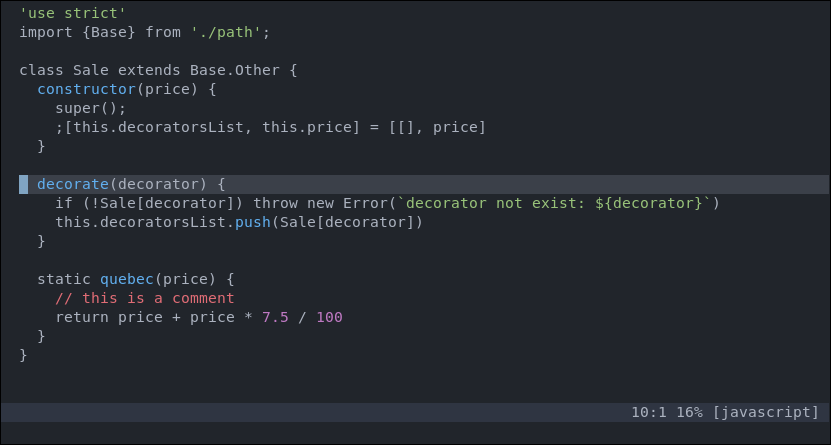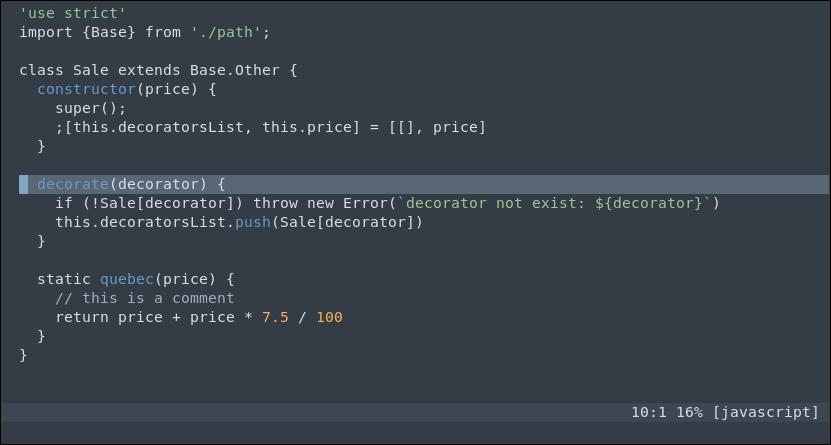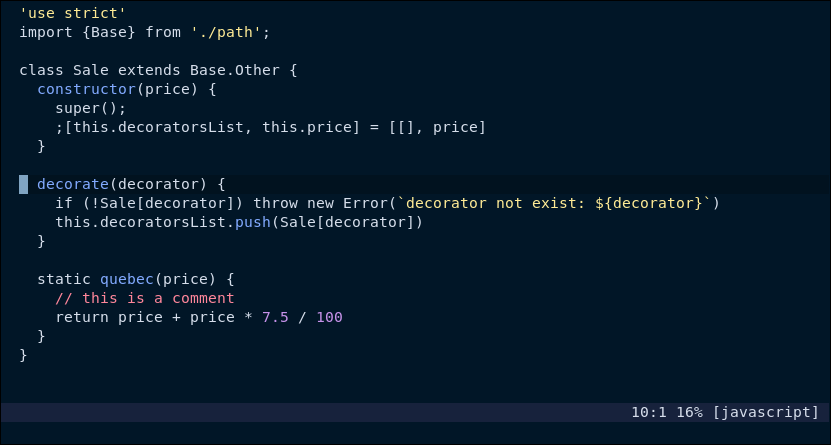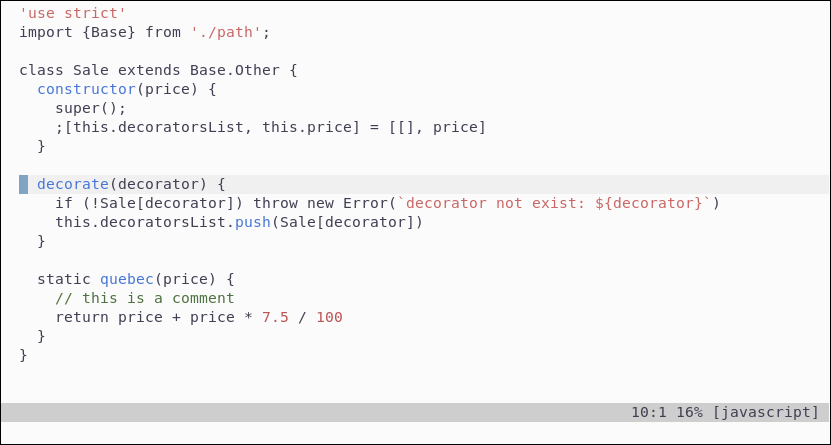A collection of extensible color schemes with minimal amount of highlighting for Neovim.
Inspired by the same premise of the alabaster color scheme for Sublime Text it defines just four classes:
- Strings
- Known constants (numbers, symbols, booleans)
- Comments
- Functions
Make sure you have Neovim v0.7.0 or greater.
Use your favorite plugin manager. For example.
With packer:
use {'VonHeikemen/little-wonder'}With vim-plug:
Plug 'VonHeikemen/little-wonder'lw-rubber
lw-mariana
lw-owl
lw-summer
Documentation on this subject is a work in progress.
Did you know colorschemes can be lua files? Yes, they can. You can make use of the helper functions on this plugin to create your very own colorscheme.
The first step to create a colorscheme is to create a colors folder right next to your init file. Next, inside that new folder, create a lua file with the name of your colorscheme.
Each theme has an .update function that allows you to override the default values. What are the defaults? Well, they are divided in four categories.
- globals
- syntax
- ui
- terminal
Each "category" is a table that can take a "highlight". And, a "highlight" is a table that contains the properties gui and cterm. gui is a string with an hexadecimal code that represents a color. cterm must be a number within the range of 0 and 255, these represent colors (some) terminals support (here is a cheatsheet with previews of colors for cterm).
If you want to get familiar with all the properties in each category I recommend reading the source code of one theme.
Anyway, here is an example that show how can you make a theme based on lw-rubber. For this example we'll create a theme called darkling. Make a colors/darkling.lua.
local lw = require('little-wonder')
local rubber = require('little-wonder.themes.rubber')
local theme = rubber.update({
globals = {
background = lw.NONE --> use the background of terminal
},
syntax = {
string = {gui = '#FFEB95', cterm = 222},
storage = {gui = '#89C4F4', cterm = 75 }
}
})
lw.apply('darkling', theme)
---
-- Custom rules
---
-- make telescope matches yellow
lw.highlight('TelescopeMatching', {gui = '#FFEB95'})
-- make matching pair the same color as booleans (why not?)
lw.link('MatchParen', 'Boolean')Notice here that I also showed .highlight and .link, they don't do much. Those two are just tiny wrappers around vim.api.nvim_set_hl, you can use that function directly if you want to.
Now in you init.lua make sure you can use it only when little-wonder is installed.
local ok, lw = pcall(require, 'little-wonder')
if ok then vim.cmd('colorscheme darkling') endIf you use an init.vim.
try
colorscheme darkling
catch
" do something else
endtryYou don't have to base your new colorscheme from an existing one. You can do it "from scratch".
local lw = require('little-wonder')
local color = {
white = {gui = '#DCE0DD', cterm = 249},
black = {gui = '#2F343F', cterm = 234},
green = {gui = '#87D37C', cterm = 108},
blue = {gui = '#89C4F4', cterm = 75 },
cyan = {gui = '#50C6D8', cterm = 73 },
red = {gui = '#FC8680', cterm = 168},
magenta = {gui = '#DDA0DD', cterm = 139},
yellow = {gui = '#F2CA27', cterm = 173},
bright_black = {gui = '#5F6672', cterm = 242},
bright_white = {gui = '#DADFE1', cterm = 253},
dark_gray = {gui = '#939393', cterm = 246},
gray = {gui = '#8893A6', cterm = 103},
light_gray = {gui = '#404750', cterm = 238},
wild_red = {gui = '#DF334A', cterm = 167},
dark_blue = {gui = '#242830', cterm = 235},
darkness = {gui = '#3B4252', cterm = 238},
}
local theme = {
globals = {
type = 'dark',
foreground = color.white,
background = color.black,
},
syntax = {
comment = color.red,
string = color.green,
constant = color.magenta,
storage = color.blue,
special = color.dark_gray,
error = color.wild_red,
error_bg = nil
},
ui = {
cursorline = color.dark_blue,
selection = color.light_gray,
colorcolumn = color.bright_black,
dark_text = color.dark_gray,
line_nr = color.dark_gray,
line_bg = color.darkness,
folds = color.dark_gray,
menu_item = color.dark_blue,
menu_selected = color.bright_black,
search = color.yellow,
matchparen = color.yellow,
info = color.cyan,
warning = color.yellow,
error = color.red
},
terminal = {
white = color.white.gui,
bright_white = color.bright_white.gui
black = color.black.gui,
bright_black = color.bright_black.gui
red = color.red.gui,
green = color.green.gui,
blue = color.blue.gui,
magenta = color.magenta.gui,
yellow = color.yellow.gui,
cyan = color.cyan.gui,
}
}
lw.apply('darkling', theme)
---
-- Custom rules
--
-- do whatever you want...That's it. A "theme" is actually just a lua table.
If you find this useful and want to support my efforts, buy me a coffee ☕.




